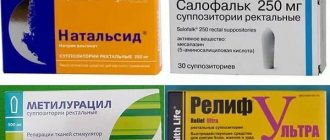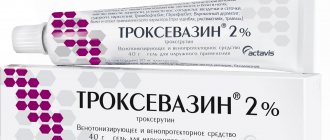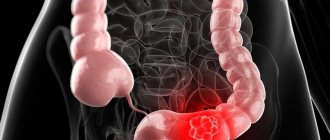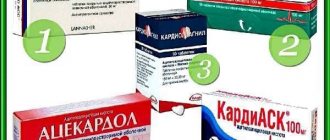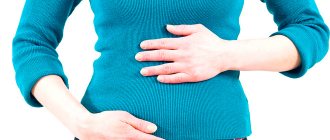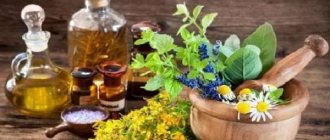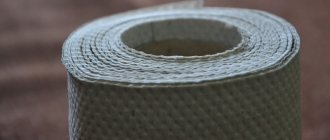Acute colitis
The etiological factors of acute colitis are most often the entry of pathogenic microorganisms into the body:
- streptococci;
- staphylococci;
- dysentery bacteria;
- amoeba;
- Proteus;
- balantidium;
- Salmonella
Acute colitis can also develop under the influence of certain factors:
- for nutritional disorders;
- viral and infectious diseases (flu, pneumonia, malaria, sepsis);
- if you have allergies to certain medications or foods.
Causes of colitis
Inflammation of the colon mucosa develops under the influence of certain factors. The main causes of colitis include infectious diseases. Pathogenic microorganisms actively release toxins that irritate the intestinal walls.
Colitis often develops as a complication of existing pathologies of the digestive system. Most often these include hepatitis, pancreatitis, cholecystitis and gastritis. The drugs prescribed for the treatment of these diseases (antibiotics, anti-inflammatory drugs) have a negative effect on intestinal motility, reducing it.
If you consult a doctor in a timely manner, the prognosis for the disease is favorable.
Another common cause of the disease is poor nutrition, strict diets and alcohol abuse. If food is poor in fiber, this leads to decreased peristalsis, resulting in the development of nutritional colitis. Alcohol abuse contributes to chronic irritation of the intestinal mucosa, which becomes the main cause of the disease.
The abuse of mucous preparations and cleansing enemas also leads to irritation of the intestinal mucosa and the subsequent development of the inflammatory process.
Chronic colitis
With insufficient or improper treatment and low body resistance, patients with acute colitis may develop chronic colitis.
- Most often, chronic colitis is provoked by the presence of dysentery bacteria, although other microorganisms (staphylococci, salmonella, proteus, balantidia, amoebas, pathogenic strains of Escherichia coli, Giardia, Trichomonas) can also cause chronic colitis.
- In some cases, helminthiasis may be the cause of chronic colitis.
- Chronic colitis can develop in the presence of foci of infection in nearby organs or organs that have an anatomical connection with the intestines (in the pancreas, in the gall bladder). In women, chronic colitis can be triggered by inflammatory processes in the pelvic organs. In the case of certain chronic infections (brucellosis, salmonellosis, etc.), colitis may be caused by the presence of a focus of the pathological process directly in the colon or under the influence of toxins from these infections.
- The cause of nutritional colitis may be:
- abuse of spicy foods or alcoholic drinks;
- long monotonous diet;
- systematic consumption of large amounts of indigestible food.
- Of considerable importance are functional disorders of the digestive glands that arise due to disrupted diet. Colitis develops when consuming food that is poor in proteins and vitamins, as well as physiological stimulants of the secretory and motor functions of the intestine.
- Colitis can also be caused by ingestion of food masses that are not sufficiently processed for intestinal digestion (due to diseases of the stomach, pancreas, small intestine, liver, bile ducts, or as a result of chewing disorders).
- Intoxication with alkalis, heavy metals, and some medications (salicylates, digitalis, diphenhydramine, etc.) can also cause such an unpleasant disease as chronic colitis.
- In inflammatory processes of other organs of the digestive system (pancreatitis, gastritis, cholecystitis, hepatitis, duodenitis, etc.), secondary colitis can develop. In such situations, viscero-visceral reflexes play a significant role.
- Patients with cirrhosis of the liver and diseases of the cardiovascular system may be susceptible to this disease.
- The risk group also includes patients exposed to ionizing radiation.
- The presence of abnormalities in the structure and position of the intestine (megacolon, megasigma, dolichosigma, coloptosis, diverticulosis), adhesions in the peritoneum, can also provoke the development of chronic colitis.
Colitis, enterocolitis
Colitis
is an inflammatory disease of the mucous membrane of the large intestine.
Enterocolitis
is inflammation of the mucous membrane of the small and large intestines at the same time.
Acute colitis occurs quickly and violently, while chronic colitis occurs slowly and slowly. Acute inflammation of the colon often occurs simultaneously with inflammation of the small intestine (enterocolitis) and gastritis.
Colitis can be different: ulcerative, in which ulcers form on the intestinal walls, infectious, which are caused by pathogens, ischemic, when blood does not reach the intestines well, medicinal, radiation, etc.
Causes
There are several reasons for the development of colitis:
| The first symptom of colitis is abdominal pain |
- Intestinal infection (caused by bacteria, viruses, fungi, protozoa, for example, dysentery, salmonellosis, etc.);
- long-term use of certain antibiotics (for example, lincomycin) and other medications (laxatives, antipsychotics, etc.);
- impaired blood supply to the intestine (observed in older people);
- unhealthy diet (excessive amounts of flour and animal foods in the diet, abuse of spicy foods and alcohol, monotonous diet);
- exposure to radiation;
- intestinal dysbiosis;
- food allergies;
- worms;
- poisoning with lead, arsenic, etc.;
- bad heredity;
- foci of infection in the gallbladder and pancreas;
- mental and physical stress and improper daily routine.
- unknown reasons. In particular, the causes of the development of nonspecific ulcerative colitis and Crohn's disease - chronic inflammatory bowel diseases - have not yet been clarified.
Mechanism of development of colitis
Complications of colitis and enterocolitis:
- Poisoning and dehydration of the body in severe infections
- Anemia and acute blood loss in ulcerative lesions
- Decreased quality of life with chronic colitis (chronic poisoning of the body and all the ensuing consequences)
- Chronic colitis is a risk factor for oncology and the tumors themselves may be accompanied by signs of colitis.
The basis of any colitis is damage to the intestinal mucosa.
Colitis caused by intestinal infection occurs most rapidly. Pathogenic microorganisms entering the intestinal mucosa cause damage. An inflammatory process develops. The intestinal wall swells, its contraction (peristalsis) and mucus secretion are impaired. There is a painful urge to defecate, diarrhea, sometimes with blood and mucus, and abdominal pain. Substances released by bacteria enter the blood, which leads to an increase in body temperature.
In chronic colitis, various factors lead to damage to the intestinal mucosa: impaired blood supply to the intestinal wall, poor diet, food allergies.
Manifestations of colitis and enterocolitis
The first sign of any colitis is abdominal pain, and rumbling or bloating may be bothersome. Stool disorders are also typical: constipation, diarrhea, or unstable stool (constipation alternating with diarrhea). In severe cases, intestinal obstruction may occur. Mucus or even blood sometimes appears in the stool. A person feels lethargic, weak, and sometimes the temperature rises. Acute colitis lasts from several days to several weeks.
By the nature of the complaints, it is possible to determine which part of the gastrointestinal tract is affected and the possible cause of the disease.
- Enterocolitis is characterized by pain in the navel, bloating, and diarrhea with a large amount of foamy stool.
- Infections and severe dysbacteriosis are characterized by a foul odor and green stool color (especially with salmonellosis).
- If pain in the stomach, nausea and vomiting occurs, it means that the stomach is also damaged and acute gastroenteritis has developed.
- An infectious lesion of the large intestine is characterized by diarrhea with a small amount of softened stool, mixed with mucus, and may be streaked with blood. Pain in the lower abdomen, often on the left, spasmodic pain. When the distal (end) parts of the large intestine (sigmoid, rectum) are affected, tenesmus (false urge to defecate), imperative (“commanding” urges that cannot be restrained), painful and frequent urge to defecate with the release of small portions of feces (“rectal”) often occur. spit"), which may be mixed with blood, pus and mucus. This picture is typical for dysentery.
- Amoebiasis is characterized by “raspberry jelly” stools.
- Infectious lesions are accompanied by general symptoms (weakness, weakness, headache) and often an increase in body temperature (from slight to severe).
- With non-infectious colitis, dysbacteriosis, constipation and diarrhea may alternate or regular constipation and stool in the form of “sheep feces” may be observed.
- Ulcerative colitis is characterized by an admixture of blood in the stool, but if there is blood on the surface of the stool, then the problem should be looked for in the rectum (fissure, hemorrhoids, cancer).
- Dark, liquid, “tarry” stools are a sign of gastrointestinal bleeding. Call an ambulance urgently! Just dark, but shaped stools are associated with the food eaten and are not dangerous.
Diagnostics
| Treatment of colitis and enterocolitis must be carried out under the supervision of a physician. |
The problem of colitis is dealt with by a gastroenterologist and a coloproctologist. During the consultation, a specialist will listen to your complaints, conduct an examination, and then prescribe additional tests. First of all, it is necessary to take a stool test, which can be used to judge how well the intestines are functioning and whether there is an intestinal infection.
The following are also used to diagnose colitis:
- Irrigoscopy is an X-ray examination of the intestine with its preliminary filling with a contrast agent;
- sigmoidoscopy - a section of the intestine (up to 30 cm) is examined using a special endoscopic device (rectoscope) inserted through the anus;
- Colonoscopy is a study similar to sigmoidoscopy, but a section of the intestine up to one meter in length is examined.
It is necessary to carefully prepare for performing the listed studies. The purpose of preparation is to cleanse the intestines.
To clarify the diagnosis, the doctor may also prescribe an ultrasound examination of the abdominal organs.
Treatment of colitis and enterocolitis
Treatment of any colitis and enterocolitis begins with the appointment of a special diet. Further tactics depend on the specific cause of the disease:
- If the disease is caused by an intestinal infection, antibiotics may be prescribed. For intestinal infections and poisoning, it is possible to take adsorbents on your own (“Activated carbon”, “Lactofiltrum”). 30-40 minutes after adsorbents, for infections, you can take “No-shpu” (for cramps), intestinal antiseptics (“Furazolidone”). "Enteros-gel", "Smecta" have both an adsorbent and antiseptic effect. The most common mistake is self-administration of antibiotics; they often aggravate intestinal disorders, causing dysbiosis. They can only be drunk as prescribed by a doctor. If there is excessive diarrhea or vomiting, you need to replenish the lost fluid with saline solutions. At home, Regidron and Oralit are good. They are useful to have in your first aid kit. The solution is prepared according to the instructions and a liter is drunk in small sips over an hour.
- If colitis is caused by long-term use of drugs, the drugs are discontinued or replaced with others, if withdrawal is impossible.
- For chronic colitis, antispasmodics (for example, No-shpa), regulators of intestinal motility, antidiarrheals (for example, Loperamide, Imodium), anti-inflammatory drugs (for example, Sulfasalazine), and in severe cases - glucocorticoid hormones are used. In addition, physiotherapy (thermal treatment), psychotherapy, as well as sanatorium-resort treatment (Essentuki, Zheleznovodsk, Pyatigorsk) can be prescribed.
Classification of colitis
Depending on the etiology, the following forms of colitis are distinguished:
- toxic (endogenous, exogenous);
- invasive (parasitic);
- infectious;
- medicinal;
- radial;
- nutritional (due to nutritional dyspepsia, as well as dyspepsia associated with acquired or congenital enzymatic deficiency);
- neurotrophic and neurotic (proctomyxorrhea, neurotic diarrhea);
- due to mechanical injuries to the intestines;
- mixed etiology;
- unknown etiology;
- secondary (due to diseases of other organs).
Determining the etiological factor is very important for directing the vector of treatment and prevention of this disease. But the clinical manifestations of colitis do not depend on the etiological factors of the disease, but on their localization and severity of morphological changes, the body’s reactions to the disease, the nature of intestinal dysfunction, and the presence of lesions in other organs and systems.
Based on the location of colitis, the following forms are distinguished:
- segmental colitis (iletiflitis, angulitis, proctosigmoiditis, transversitis);
- pancolitis;
- predominantly right-sided colitis;
- predominantly left-sided colitis.
Based on the results of endoscopic examination, the following forms of colitis can be determined:
- catarrhal (initial) form;
- atrophic form;
- erosive-ulcerative.
Symptoms of chronic colitis
The main subjective signs of chronic colitis are abdominal pain, stool disorders, and tenesmus. The pain is most often aching or cramping in nature, localized in the lower and lateral parts of the abdomen and occurs 7-8 hours after eating. Pain decreases after defecation or passing of gas. The localization of pain mainly depends on the extent of the inflammatory process in the intestines.
Sigmoiditis is characterized by pain in the left iliac region; with iletiflitis, pain appears in the right half of the abdomen, and can sometimes radiate to the lower back. In chronic colitis, regional lymph nodes may be involved in the process, and abdominal pain may be constant and also intensify after enemas, during fast walking or shaking. Solaritis is characterized by boring, burning, and less often dull pains concentrated near the navel; such pains can radiate to the lower abdomen or back. With chronic colitis, there may be frequent changes in stool - alternating constipation with diarrhea. Patients may experience a feeling of incomplete bowel movement or a false urge to defecate.
Also, most patients may experience the following symptoms of chronic colitis: unpleasant taste in the mouth, belching, nausea, bloating. Palpation reveals stretching or thickening of individual intestinal loops and pain. In some cases, weight loss may occur. With a severe inflammatory process, the patient's body temperature rises.
Ulcerative colitis
Ulcerative colitis is a chronic and often relapsing disease. It most often manifests itself in young people, from 20 to 40 years old; there is also an increase in cases of the disease in patients over 55 years old. With ulcerative colitis, a number of characteristic symptoms are observed: diarrhea, constipation, abdominal pain, intestinal bleeding. In addition, there is fever and nausea, the patient’s weight gradually decreases, and the person feels severe weakness and fatigue. Symptoms intensify as the severity and extent of the inflammatory changes increase.
With severe total damage to the colon, the patient experiences profuse diarrhea, in which a significant amount of blood is present in the stool. Often the blood comes out in relatively large clots, and cramping pain in the abdomen appears before emptying. The person develops anemia and severe signs of intoxication. In this case, the disease is fraught with complications that pose a danger to the patient’s life. This is perforation of the colon, toxic megacolon, and severe bleeding in the intestine. The most unfavorable course of the disease is observed in patients with a fulminant form of ulcerative colitis.
In the process of prescribing a course of treatment for ulcerative colitis, the doctor is guided by a number of individual factors: the localization of the pathology, its extent, the presence of complications. First of all, with the help of conservative treatment, the attack of the disease is prevented, its progress and relapses are prevented. Distal ulcerative colitis ( proctitis , proctosigmoiditis ) is mild, therefore, these ailments can be treated at home. Such diseases are considered the most common forms of chronic colitis. They predominantly occur as a result of bacterial dysentery , chronic constipation, constant irritation of the rectal mucosa due to frequent use of suppositories and enemas. With such diseases, pain occurs in the left iliac region, as well as in the anus, and flatulence occurs.
For ulcerative colitis, it is recommended to eat high-calorie, mainly protein foods, as well as vitamin-containing foods. At the same time, the amount of animal fats is limited, and coarse fiber of plant origin is excluded altogether.
Diagnosis of colitis
This diagnosis is made on the basis of a number of studies, among which sigmoidoscopy, irrigoscopy and colonoscopy play a very important role.
During an irrigoscopic examination, a picture of a “pseudotumor” with a specific defect similar to a thumbprint is visualized in the affected area. With the help of endoscopic examination, submucosal hemorrhages, swelling of the mucous membrane, the area susceptible to this disease are revealed; in advanced cases, the mucous membrane has inflammatory infiltration and ulceration, and also as a result of scarring of the ulcers - strictures of these areas of the intestine. To confirm the obstruction of the mesenteric artery, selective mesenteric angiography is performed.
In addition to instrumental studies, the patient is shown bacteriological and scatological studies of stool.
The chronic form of colitis has a progressive course, and therefore requires complex treatment and constant monitoring.
Differential diagnosis
When diagnosing colitis, differential diagnosis of this disease plays a very important role, because some forms of this pathology have a number of symptoms similar to other diseases.
For example, the ulcerative-necrotizing form of colitis is similar to colon cancer, and in order to exclude cancer, a morphological examination of a biopsy taken from the affected area is necessary.
Also, chronic colitis is similar to intestinal tuberculosis, so a number of additional studies are necessary for the purpose of differential diagnosis. The pathologies that need to be differentiated from colitis also include dyskinesia of the large intestine.
Treatment of chronic colitis
The treatment strategy for colitis depends on the severity and form of the disease. The main principle of treatment is systematicity. After identifying the infectious pathogen, specific antibiotic therapy is prescribed. It is very important to normalize the patient’s diet. Meals should be taken 6-7 times a day. The diet requires you to exclude fatty, spicy, fried foods, you must eat crackers from rye or wheat bread, low-fat soups with rice, semolina or pearl barley, soft-boiled eggs, lean fish or meat, and you can drink green tea and coffee. In the acute period, a so-called “starvation diet” may be indicated.
In addition to antibiotics and sulfa drugs, special attention should be paid to restoring the intestinal microflora. For this purpose, probiotics are prescribed. For severe pain symptoms, the use of antispasmodics is indicated. Sometimes the patient is indicated for physiotherapy: for atonic enterocolitis - galvanization, massage, faradization; in case of spasticity - solux, heat, infrared. Colon lavage with chamomile infusion has a positive effect.
How to cure colitis forever with folk remedies
Since the disease most often has a chronic form, it periodically worsens. The constant struggle with the disease empties the wallet and physically exhausts the patient. Therefore, pharmaceutical companies are constantly developing new drugs that are more effective.
However, inflammatory phenomena in the intestines were successfully treated even before the advent of the first drugs. There are many recipes that have survived to this day.
Folk remedies
Traditional healers know how to cure colitis forever, using available remedies and medicinal herbs. Recipes for medicinal infusions and decoctions can be found in specialized literature, on websites and forums dedicated to treatment without pills.
The following remedies will help eliminate inflammatory processes, restore proper intestinal function, and speed up the healing process of ulcers:
- Pharmaceutical camomile . Brew six tablespoons of dry raw materials with two liters of boiling water, wrap the container with a warm cloth. The infusion will be ready in two hours. It’s even easier to prepare it if you use a thermos for this purpose. Take two tablespoons three times daily before meals. Treatment is carried out for one month. The nimble course can be completed in two weeks.
- Watermelon rind . Pour one liter of boiling water over one hundred grams of raw material and leave for about an hour. Drink one glass of infusion five or six times a day. This recipe is great for relieving acute symptoms during an exacerbation of the disease.
- Mint . Pour two hundred grams of dry raw material into two liters of boiling water and leave for several hours. Take half a glass three times a day for one and a half months.
In a similar way, you can prepare infusions from pomegranate peels, sage, alder cones, and wormwood. It should be remembered that colitis can be cured forever in this way only with long-term and regular use of folk remedies.
Herbal infusions
It is useful to treat intestinal inflammation with herbal teas, for example, the following:
- motherwort, nettle, mint - will eliminate increased gas formation and putrefactive processes;
- caraway, sage, mint, St. John's wort - will quickly relieve inflammation;
- burnets, bird cherry, blueberry - will stop bleeding, heal ulcers;
- cumin, oregano, chamomile - will relieve pain and eliminate flatulence.
Prevention of chronic colitis
It is very important not to start this disease; for this you need to follow the doctor’s recommendations and undergo regular examinations; a qualified doctor will always advise and tell you what to do for colitis. It is also necessary to monitor nutrition, which should be balanced and rational, and compliance with sanitary and hygienic standards. For people whose work involves hazardous chemicals, it is necessary to adhere to occupational safety regulations.
Patients with chronic colitis should refrain from work associated with physical activity, frequent business trips that contribute to poor diet, as well as psycho-emotional stress and stress.
With timely, competent treatment and follow-up, this disease has a favorable prognosis.

